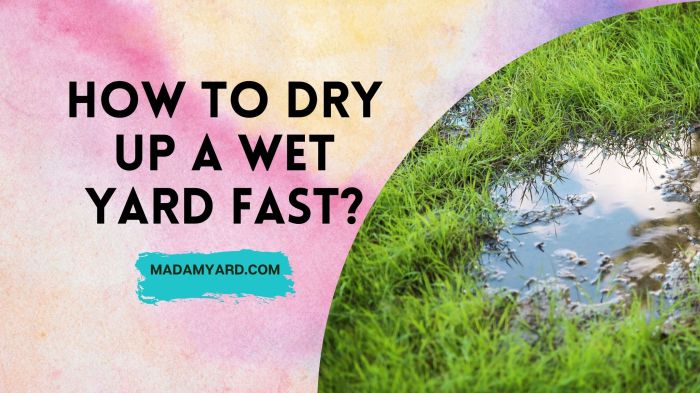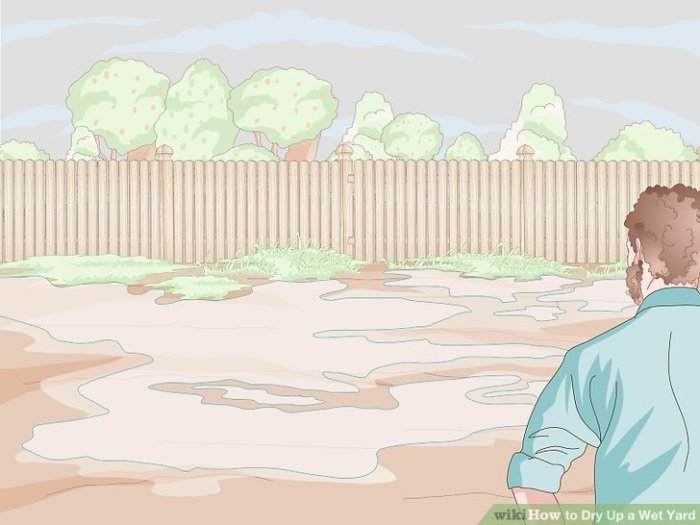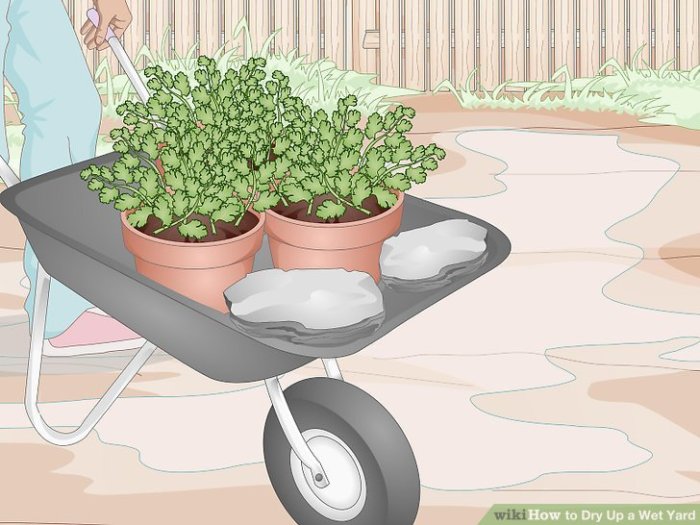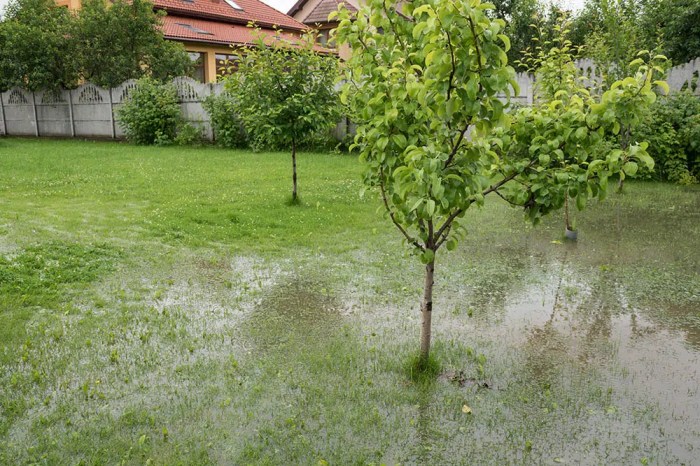How to dry up a wet yard – If you’re tired of your backyard resembling a waterlogged swamp, then it’s time to take action! Drying up a wet yard is a manageable task with the right approach. In this comprehensive guide, we’ll delve into effective drainage solutions, landscaping strategies, and maintenance tips to help you reclaim your outdoor oasis.
From installing French drains to implementing proper grading techniques, we’ll cover all the essential steps to transform your soggy yard into a dry and inviting space. So, grab your tools and let’s get started on drying up that wet yard!
Site Assessment

Conducting a thorough site assessment is crucial for developing an effective strategy to dry up a wet yard. This involves carefully evaluating various factors that contribute to the water accumulation problem.
Begin by determining the size, shape, and slope of the yard. These characteristics influence the flow of water and the potential for pooling. Note the soil type, as different soils have varying drainage capabilities. Identify the drainage patterns, including any existing drainage systems or natural drainage channels.
Potential Sources of Water Accumulation
Identifying the sources of water accumulation is essential for addressing the problem at its root. Inspect downspouts and ensure they are properly directing water away from the yard. Check for runoff from neighboring properties that may be contributing to the issue.
Determine if groundwater seepage is a factor, which can be indicated by standing water in low-lying areas or near foundations.
One effective method for drying up a wet yard is to apply diatomaceous earth, a natural mineral powder that absorbs moisture. Diatomaceous earth in the garden not only helps improve drainage but also controls pests and enriches the soil with essential minerals.
By incorporating diatomaceous earth into your yard care routine, you can create a drier, healthier environment for your plants and reduce the risk of waterlogging.
Drainage Solutions: How To Dry Up A Wet Yard

Addressing excessive moisture in your yard requires implementing effective drainage solutions. Two popular options are French drains and dry wells, each offering distinct advantages in managing excess water.
French Drains
French drains are underground trenches filled with gravel that redirect water away from your yard. They work by intercepting water before it reaches the surface, preventing waterlogging and promoting drainage.
- Materials:Perforated pipe, gravel (3/4″ to 1 1/2″ diameter), filter fabric
- Trench Dimensions:6-12 inches wide, 12-18 inches deep, sloped 1/4 inch per foot
- Gravel Specifications:Clean, washed gravel, free of dirt and debris
Dry Wells, How to dry up a wet yard
Dry wells are large underground chambers that collect and infiltrate excess water into the ground. They are ideal for areas with limited drainage or impermeable soil.
- Location:Downspouts, low-lying areas, or near sources of water
- Size:Determined by the amount of water to be managed
- Construction:Perforated pipe, gravel (1″ to 3″ diameter), concrete or plastic liner
Grading and Landscaping

Proper grading and landscaping can significantly enhance drainage by directing water away from low-lying areas and encouraging its absorption and redirection.
Grading
Grading involves shaping the land’s surface to create a slope that promotes water flow. A proper slope allows water to drain away from structures, driveways, and other areas where it can cause problems.
If you’re looking for ways to dry up a wet yard, there are several techniques you can try. One effective method is to create drainage ditches or channels to divert excess water away from your yard. You can also plant trees and shrubs that absorb moisture from the soil.
Additionally, consider growing vegetables that thrive in wet conditions, such as vegetables to grow in summer. By implementing these measures, you can help dry up your yard and improve its overall drainage.
To create an effective slope, consider the following tips:
- Determine the direction of natural water flow on your property.
- Create a slope of at least 2% away from buildings and other structures.
- Use a level or transit to ensure the slope is even.
- Compact the soil to prevent erosion.
Landscaping
Plants and landscaping features can play a crucial role in improving drainage. Certain plant species are tolerant of wet conditions and can help absorb excess water, while others can redirect water flow.
Consider incorporating the following plants into your landscaping:
- Rain gardens: These are designed to collect and absorb rainwater, reducing runoff.
- French drains: These are trenches filled with gravel that allow water to drain away.
- Swales: These are shallow, vegetated channels that direct water flow away from problem areas.
- Permeable pavers: These allow water to seep through, reducing runoff.
Maintenance and Prevention

Proper maintenance and preventative measures are crucial for keeping your yard dry and preventing future water buildup. Regular cleaning and soil aeration can significantly improve drainage and reduce the risk of waterlogging.
Gutter and Downspout Cleaning
Gutters and downspouts play a vital role in directing water away from your home and yard. Regular cleaning is essential to prevent clogs and ensure proper water flow.To clean gutters and downspouts safely and effectively:
- Wear gloves and safety glasses.
- Use a ladder to reach the gutters.
- Remove debris such as leaves, twigs, and dirt using a scoop or trowel.
- Flush the gutters with a hose to remove any remaining debris.
- Inspect downspouts for clogs and clean them using a snake or high-pressure water hose.
Soil Aeration
Soil compaction can hinder water infiltration and lead to waterlogging. Soil aeration helps break up compacted soil, allowing water to drain more easily.Techniques for aerating soil include:
- Using a core aerator to remove plugs of soil.
- Tilling the soil to loosen the top layer.
- Adding organic matter such as compost or peat moss to improve soil structure.
Regular soil aeration can significantly improve drainage and prevent water buildup in your yard.
Last Recap

With a little effort and planning, you can bid farewell to your wet yard woes. By implementing the strategies Artikeld in this guide, you’ll not only improve the aesthetics of your outdoor space but also enhance its functionality. Remember, a dry yard is a happy yard, so get ready to enjoy your revitalized outdoor haven.